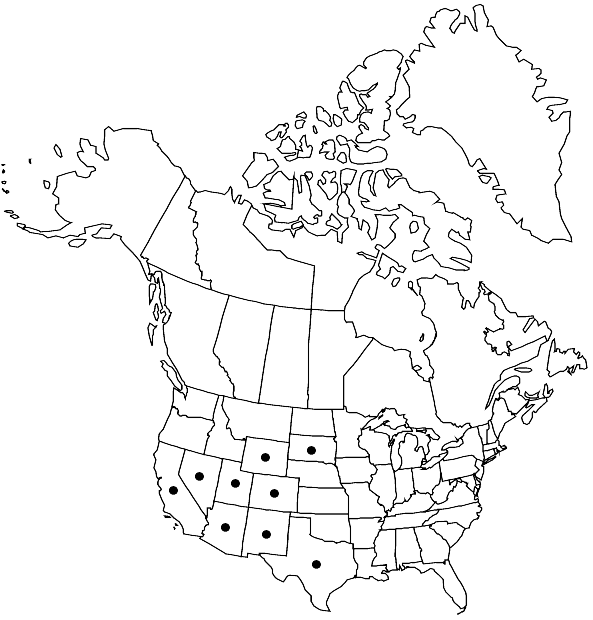Tortula inermis
Arch. Bot. (Leipzig) 1: 136. 1832,.
Leaves lingulate, apex rounded-acute, apiculate to short-mucronate, margins recurved from base to near the apex, not bordered; costa subpercurrent, percurrent or very short-excurrent, lacking an adaxial pad of cells but distally narrowing or weakly thickened, 3–4 (–5) cells across the convex adaxial surface; distal laminal cells hexagonal, (12–) 15–18 µm wide, 1: 1, strongly papillose with 4–5 2-fid papillae. Sexual condition gonioautoicous. Sporophytes exerted. Seta 1.2–1.5 (–2.5) cm. Capsule stegocarpic, not systylius, cylindric, erect and nearly straight, urn usually 3–4 mm; peristome length 1000–1500 µm, teeth of 32 filaments twisted at least one full turn, basal membrane 300–600 µm; operculum 1.3–1.6 (–2) mm. Spores 11–15 µm, spheric, finely papillose.
Phenology: Capsules mature spring.
Habitat: Soil, rock
Elevation: low to high elevations (0-2000 m)
Distribution

Ariz., Calif., Colo., Nev., N.Mex., S.Dak., Tex., Utah, Wyo., Mexico (Baja California), Mexico (Chihuahua), Mexico (Sonora), Europe, s Asia, n Africa
Discussion
Tortula inermis has the aspect of a Syntrichia with its ligulate, apiculate leaves and strong costa, but the plant is yellow or orange in KOH solution, and the costal section reveals a rounded stereid band. It is related to T. subulata and T. mucronifolia but the lack of a strong mucro and the narrow but nearly complete recurving of the leaf margins are diagnostic.
Selected References
None.
Lower Taxa
"um" is not declared as a valid unit of measurement for this property.